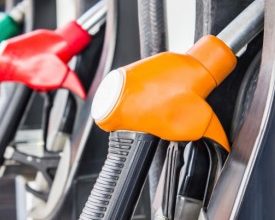Spring Forward: Gas Prices Higher With Rising Demand

Pump prices have maintained a steady march higher, rising eight cents since to $3.39, according to Thursday’s report. More expensive oil is a likely culprit, as crude accounts for nearly 60% of pump prices. The cost for a barrel of oil is edging closer to $80, about $10 more per barrel than a few months ago.
“Spring is nearly here, with longer days, better weather and more opportunities to hit the road,” said Andrew Gross, AAA spokesperson. “And we are seeing this reflected in rising gasoline demand. But remember, we see this trend every year.”
According to new data from the Energy Information Administration (EIA), gas demand jumped from 8.47 to 9.01 million b/d last week. Meanwhile, total domestic gasoline stocks tightened by 4.5 million bbl to 239.7 million bbl. Growing gas demand amid tighter supply has pushed pump prices higher.
Thursday’s national average of $3.39 is 25 cents more than a month ago but two cents less than a year ago.
Quick Stats
-
- Since Feb. 29, these 10 states have seen the largest increases in their averages: Ohio (+28 cents), Missouri (+27 cents), Kansas (+23 cents), North Dakota (+21 cents), Arizona (+17 cents), Oklahoma (+15 cents), Montana (+15 cents), Michigan (+14 cents), California (+12 cents) and Nebraska (+12 cents).
-
- The nation’s top 10 most expensive markets: California ($4.86), Hawaii ($4.71), Washington ($4.16), Nevada ($4.09), Oregon ($3.89), Illinois ($3.75), Alaska ($3.66), Arizona ($3.58), Pennsylvania ($3.54) and Washington, D.C. ($3.48).
Oil Market Dynamics
At the close of Wednesday, March 6’s formal trading session, WTI increased by 98 cents to settle at $79.13. Oil prices rose amid increased market optimism after U.S. Federal Reserve Chair Jerome Powell noted that interest rates are still expected to be cut later this year. Moreover, the EIA reported that total domestic commercial crude stocks increased by 1.3 million bbl to 448.5 million bbl last week. Also, the Organization of Petroleum Exporting Countries and its allies, including Russia, collectively known as OPEC+, extended their agreement to reduce production by 2.2 million barrels per day into the second quarter of 2024.



